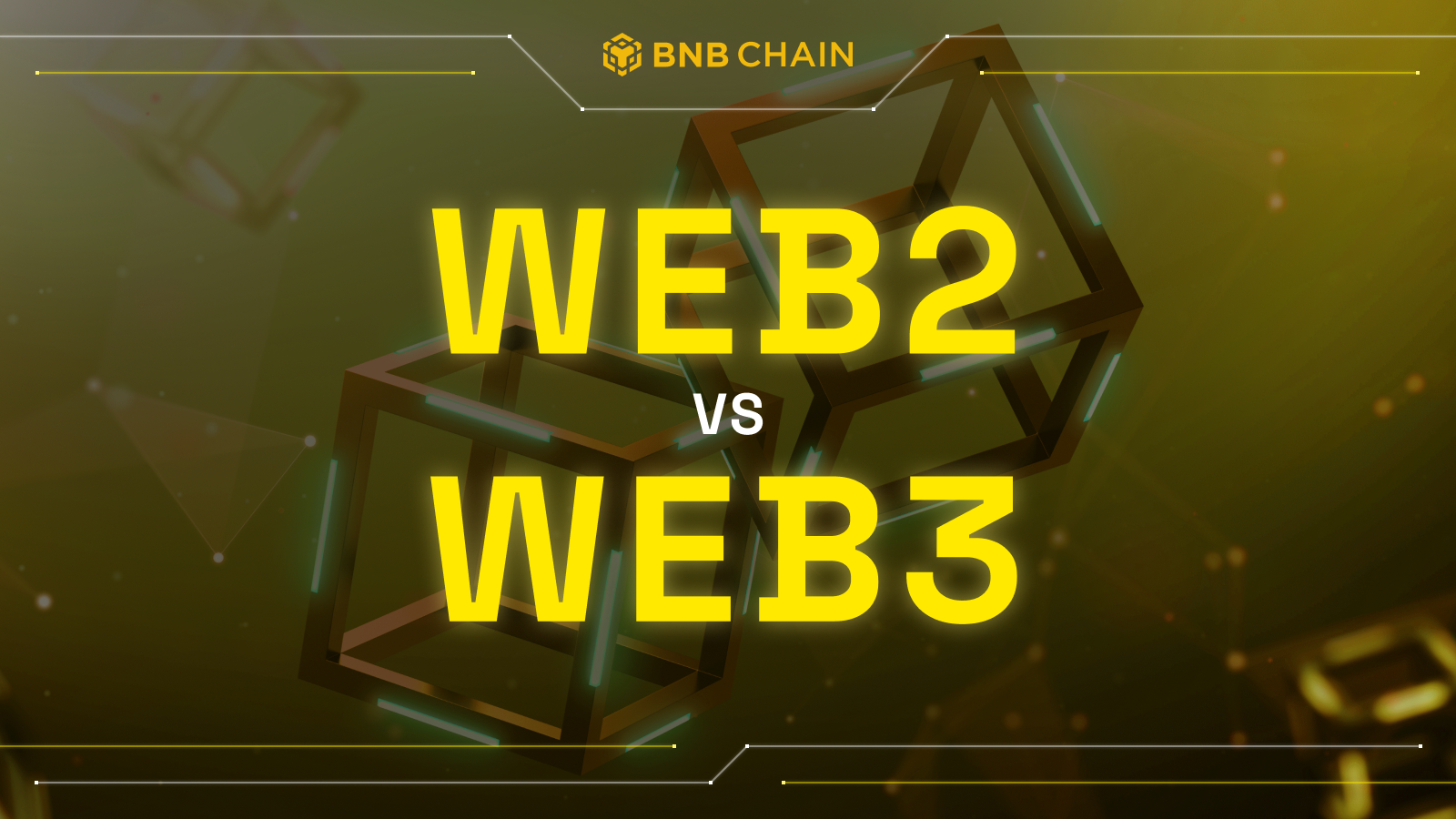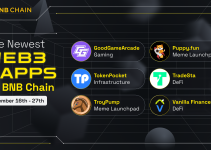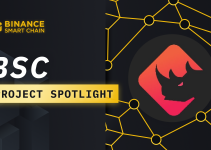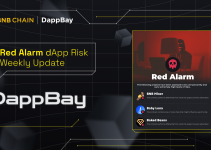Table of Contents

Web3 is one of the fastest-growing narratives backed by increasingly game-changing innovations. Yet, doubters still exist who believe that Web3 will never truly replace Web2. In this article, we will explore the Web2 vs Web3 debate and try to understand it better.
Web1 vs Web2 vs Web3
The Internet has seen significant innovation since the days of Web1. Web1 was dominated by simple HTML websites that allowed users to access information but offered little or no participation.
An interesting way to understand the transition from Web1 to Web2 to Web3 is this:
- Web1 = Read only
- Web2 = Read and write
- Web3 = Read, write, and own.
After Web1 came Web2, bringing dynamic and highly interactive websites and the growth and consolidation of online marketplaces, social media platforms, streaming services, and more.
Web3 – a term coined in 2014 by Ethereum and Polkadot co-founder, Gavin Wood – is widely regarded as the future of the internet and is being built upon several core principles: decentralization, permissionlessness, artificial intelligence and machine learning, connectivity, and ubiquity.
What Is Web2?
Web2 is the current iteration of the Internet and is characterized by dynamic and highly interactive websites and more user-generated content and usability for end-users than Web1. It came into existence in 1999 as the iInternet pivoted towards user engagement, enabling end-users to provide content instead of just viewing it.
Following the “Read and Write” philosophy, Web2 saw the rise of social media giants like Facebook, YouTube, Instagram, and Reddit, enabling users to interact with one another and share their thoughts and opinions.
However, all user data and content created in the web2 model is owned by the company providing the platform. This gives users little-to-no control over their data.
What Is Web3?
Web3 embodies a decentralized and highly user-centric Internet that could be as disruptive as Web2. It aims to dismantle the centralized power structures associated with Web2, giving individual users greater control and ownership and creating a vibrant, self-governing community that allows every participant to contribute to the decision-making process.
“Web3” is now widely used to describe an ecosystem that’s built on the principles of decentralization and trustlessness.
Key ideas behind Web3
Decentralization
Web3 distinguishes itself from Web2 primarily through its decentralized approach to data, transactions, and content control, shifting power from centralized tech corporations to individual users. While Web2 relies on centralized intermediaries to facilitate transactions and manage data, Web3 empowers users to control their own information without such intermediaries, potentially transforming internet monetization, data management, and the functioning of web-based corporations.
Trustlessness
The concept of trust also fundamentally differs between Web2 and Web3. In Web2, trust is established between parties in a transaction, often mediated by a central entity. Web3, however, is built on technology that eliminates the need for mutual trust between parties. Transactions are executed based on predefined criteria and verified data, ensuring integrity without direct reliance on trust.
Blockchain technology
Blockchain technology is a distributed database system that enables the transparent sharing of information across a network. Each block contains a set of transactions or records, which, once verified, are permanently linked to the preceding block, creating an immutable and continuous ledger. Web3 utilizes blockchains for secure, transparent transactions and record keeping.
Token-based economics
New models for ownership and participation, powered by cryptocurrencies. This integrates key elements like supply dynamics, initial allocation, vesting schedules, asset utility, and burn mechanisms to redefine ownership and participation. This approach offers a secure, inclusive model for digital asset management, balancing economic stability with innovative distribution strategies.
Real World Applications Of Web3
The real-world applications of Web3 technology span across several industries and sectors. Let’s look at some examples.
Supply Chain Management
Blockchain technology, one of Web3’s pillars, has played a crucial role in bringing transparency and traceability to supply chains. We are seeing the creation of blockchain-powered supply chains that record each product on the blockchain, ensuring complete transparency and allowing stakeholders to track products from manufacturing to delivery. The application of Web3 and blockchain in supply chain management has helped significantly improve transparency and traceability, helping reduce fraud and counterfeiting.
Decentralized Finance
One of the most prominent uses of Web3 is decentralized finance (DeFi). Thanks to smart contracts, users can access financial services like borrowing and lending without going through intermediaries such as banks.
Decentralized Autonomous Organizations
A DAO is an entity driven by its community and is an excellent example of decentralized decision-making facilitated by Web3. It is governed by smart contracts and consensus mechanisms and plays a crucial role in fund management, community-driven projects, and collective decision-making.
Metaverse
The metaverse aims to merge the physical and virtual worlds and can be centralized or decentralized. Decentralized metaverse projects can leverage the Web3 ecosystem, provide users with a highly enhanced decentralized experience, and enable realism in the metaverse.
Decentralized Identity
Web3 allows individuals to control their personal information by facilitating self-sovereign digital identity solutions. Several projects are leveraging Web3 to create decentralized identity platforms that allow users to manage their identity across applications. This gives users unprecedented control over their personal information and data.
Non-Fungible Tokens (NFTs)
NFTs are assets that have been tokenized on the blockchain and have several characteristics that make them integrate with Web3. They have several use cases in the Web3 ecosystem, such as incentivizing audiences and granting digital ownership. Web3 companies have also started raising capital by tokenizing their companies, offering exclusivity and ownership on the blockchain, or through DAOs.
Blockchain Gaming
Web3 technology has revolutionized the gaming industry by facilitating real ownership of in-game assets and creating player-driven economies. This has led to the growth of several popular Web3 games such as Ultiverse, Nine Chronicles, StarryNift, and several others. BNB Chain, in particular, has fostered one of the strongest and richest Web3 gaming ecosystems.
BNB Chain’s Web3 Mission
BNB Chain’s mission is to bring the next billion users to Web3. It does so with the following:
#1 Offering affordable blockchain solutions
BSC charges ~$0.03 gas fees, while opBNB charges less than $0.001. That’s the lowest among L1s and L2s, respectively. In 2023, BSC successfully increased its gas limit to an impressive 140M, surpassing Ethereum’s capacity by 4.6 times. This expansion in capacity enables BSC to easily process spikes in transaction demand without escalating gas fees.
Account Abstraction (AA) allows apps to leverage opBNB’s efficient transaction processing, significantly reducing gas costs for complex in-app operations and smart contract interactions. As a result, players can mint and transfer assets or NFTs seamlessly without the burden of prohibitive transaction fees. This is very beneficial for developers building complex apps.
#2 High-performance = Mass adoption
The BNB ecosystem demonstrates exceptional performance through both BSC and opBNB platforms, each tailored for enhanced transaction efficiency and speed across various applications.
BSC leverages a Proof of Staked Authority (PoSA) consensus mechanism to achieve fast block times of merely 3 seconds while keeping transaction fees low, optimizing user experiences across diverse applications.
opBNB boasts transaction speeds of 5,000 to 10,000 TPS and rapid 1-second block times. Its Fast Finality feature enhances transaction speed by efficiently batching and submitting L2 transactions to BSC. This results in transactions reaching a “soft confirmed” state in under 10 seconds and full finalization in about 20 seconds, significantly streamlining the transaction process.
#3 The “One” BNB Paradigm
The One BNB approach, integrating BSC, opBNB, and BNB Greenfield, offers a multi-chain paradigm that significantly simplifies and accelerates Web3 app development. By combining data and asset storage into a cohesive solution, One BNB eliminates the complexities traditionally associated with managing different layers of an application across multiple blockchains.
This unified framework ensures that developers can focus on innovation and user experience without being bogged down by the technical intricacies of blockchain interoperability. As a result, Web3 applications can be developed more swiftly and efficiently, benefiting from enhanced transparency, security, and decentralization inherent in a fully on-chain environment. One BNB thus sets a new benchmark for developing Web3 applications, making it a more accessible and scalable endeavor.
Read more about this paradigm here.
Web2 vs Web3: A Comparison
| Web2 | Web3 | |
| Governance | Owned by large, centralized corporations. | Owned by a decentralized network of users. |
| Speed | Faster | Currently slower |
| Censorship Resistance | Prone to censorship since a centralized organization controls operations. | Less prone to censorship since it is controlled by a decentralized network. |
| Data Ownership | Owned by the platform and the governing company. | Owned by the individual |
| Currency | Fiat | Cryptocurrencies or tokens. |
| Trust | You need to trust the centralized government | Trustless |
| Transactions | All transactions will need to be made via a third party, like a financial service provider. | All transactions are made peer-to-peer, directly between users. |
Conclusion
Web3 heralds a decentralized, user-driven Internet era, promising enhanced interoperability and seamless data flow across blockchain networks. It paves the way for decentralized finance, identity solutions, and social media, reshaping the digital landscape. Yet, hurdles in user experience, complexity, speed, and regulation loom large, questioning Web3’s full-scale adoption. Will Web3 overtake Web2, or will they coexist, serving unique purposes? The future holds the answer.


